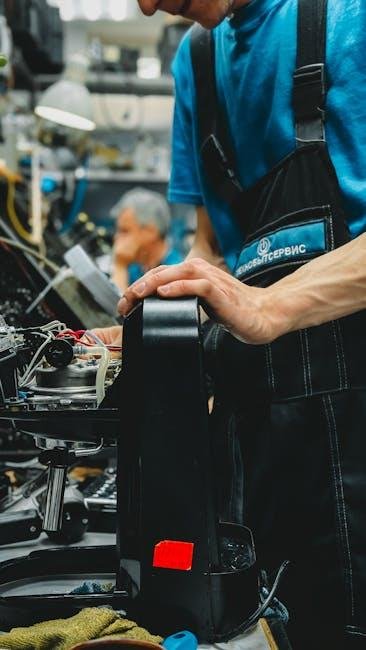In today’s rapidly evolving technological landscape, our homes are transforming into smart sanctuaries, and the kitchen is at the forefront of this revolution. Once a humble space dedicated to culinary creativity, the modern kitchen is now awash with gadgets and appliances that promise not just convenience, but a seamless integration with our digital lives. Wi-Fi enabled appliances like smart ovens, connected refrigerators, and voice-activated coffee makers boast features that range from remote operation to personalized recipe suggestions. Yet, amid the excitement lies a pressing question: Are these innovations genuine game-changers in the art of cooking, or merely shiny distractions—a high-tech facade masking a lack of substance? In this exploration of smart kitchen tech, we delve into the practicality, benefits, and potential pitfalls of Wi-Fi enabled appliances, helping you navigate whether they truly elevate our cooking experiences or are just a gimmick designed to entice the tech-savvy consumer.
Emerging Trends in Smart Kitchen Technology
As the culinary landscape evolves, so to do the technologies that enhance our cooking experiences. Smart kitchen gadgets are rising in popularity, incorporating elements such as automation and connectivity to streamline meal preparation and enhance functionality. From smart refrigerators that offer real-time inventory tracking to IoT-enabled ovens that allow users to control cooking settings from their smartphones, these tools are designed to make our lives easier. The integration of AI-driven recipe recommendations based on available ingredients is also gaining traction, providing a personalized approach to cooking that can reduce food waste and inspire creativity.
Moreover, the sustainability factor is becoming increasingly prominent within this sector. Modern smart appliances can be equipped with energy-efficient features that not only save electricity but also contribute to lower utility bills. Connectivity capabilities open doors to new functionalities, such as remote monitoring and diagnostic troubleshooting, which can lead to more efficient kitchen management. Here are some notable advancements:
- Voice-Activated Assistants: Command your kitchen with just your voice.
- Smart Plugs: Control non-smart appliances remotely.
- Connected Cooktops: Precision cooking via app-controlled settings.
| Appliance Type | Key feature |
|---|---|
| Smart Refrigerator | Inventory tracking |
| connected Oven | Remote temperature control |
| Smart Dishwasher | Energy-saving modes |

Evaluating the Practical Benefits of Wi-Fi Enabled Appliances
the integration of Wi-Fi capabilities into kitchen appliances presents a range of practical benefits that extend beyond mere convenience. For instance, remote monitoring allows users to check if the oven is preheated or if the coffee maker is brewing, all from their smartphones. This ability to oversee tasks from a distance not only saves time but also enhances safety,as users can receive alerts if an appliance is left running longer than necessary. Moreover, predictive maintenance features can inform users about potential issues before they become costly repairs, reducing downtime and ensuring the kitchen operates smoothly.
furthermore, Wi-Fi enabled appliances often come with smart assistance integrations, enabling voice-controlled interaction. This can be notably advantageous while multitasking in the kitchen. By simply issuing voice commands,users can set timers,adjust temperatures,or even search for recipes without needing to touch their devices,promoting a clean and efficient cooking surroundings. Additionally, data analytics can provide insights into energy usage, helping consumers make informed decisions about their cooking habits while also contributing to cost savings on utility bills. Collectively,these advantages demonstrate that these technologies contribute considerably to enhancing the everyday cooking experience.

Navigating Connectivity and Security Concerns
As smart kitchen technology becomes more prevalent, the importance of seamless connectivity cannot be overstated. Wi-Fi enabled appliances may promise convenience, but they are only as reliable as the network they operate on. A weak or inconsistent connection could leave a user stranded mid-cooking,rendering smart features useless. Furthermore, concerns surrounding network congestion become apparent when multiple devices vie for bandwidth, making it essential to invest in a robust home network infrastructure. Consumers should consider the following factors for optimal connectivity:
- Router Placement: Ensure your router is centrally located for maximum coverage.
- Network Quality: Opt for dual-band or tri-band routers to alleviate congestion.
- Device Compatibility: Check appliance specs for compatibility with your Wi-Fi standards.
While connectivity is crucial, security is arguably the moast pressing concern for users adopting smart kitchen tech.The integration of Wi-Fi-enabled appliances into one’s home network creates potential vulnerabilities that can be exploited by cybercriminals. Users must prioritize safeguarding their networks through a few essential practices:
| Security Measure | Description |
|---|---|
| Strong Passwords | Create complex, unique passwords for all devices and networks. |
| Firmware Updates | Regularly update appliance software to patch vulnerabilities. |
| Guest Networks | Utilize guest networks to separate smart appliances from personal devices. |

Selecting the Right Smart Appliances for Your Kitchen Needs
When exploring the world of smart appliances, it’s crucial to consider how these devices can enhance your culinary experience rather than simply serve as flashy gadgets. Assess your specific needs in the kitchen before investing. Think about which functions will truly offer convenience and efficiency. As an example, if meal planning is part of your routine, look for smart refrigerators that feature inventory tracking and recipe suggestions. Moreover,voice-activated assistants can streamline your cooking process by providing step-by-step guidance while you multitask.
To make informed choices, it’s beneficial to compare features and functionalities across various brands and models. Take into account the following factors when selecting your appliances:
- Compatibility: Ensure devices can connect to your home network seamlessly.
- energy Efficiency: Look for appliances with energy ratings to save on utility bills.
- User-Friendly Interfaces: Opt for models with intuitive controls and apps for a smoother experience.
Creating a balanced smart kitchen doesn’t always mean opting for the latest trend. Sometimes, it’s about integrating appliances that fulfill genuine culinary desires.Use the table below to visualize the essential features across popular smart kitchen appliances:
| Appliance | Key Feature | Consideration |
|---|---|---|
| Smart Refrigerator | Food Management App | Check for grocery integration features |
| Smart Oven | Remote Control & Programming | Look for recipe syncing |
| Smart Coffee Maker | Timed Brewing | Compatibility with your morning routine |
Concluding Remarks
As we conclude our exploration of smart kitchen tech, it becomes clear that the question of whether Wi-Fi enabled appliances are merely gimmicks is not easily answered with a blanket statement. While some devices may seem needless at first glance, their true value often lies in the versatility and convenience they offer within the modern culinary landscape. As technology continues to evolve, so does our relationship with the tools we use every day.
Ultimately, the effectiveness of these smart appliances depends on the individual lifestyle, preferences, and culinary needs of each user. For some, the ability to control the oven from a distance or receive alerts when the roast is done makes meal preparation a little less hectic. For others, age-old techniques and traditional tools suffice just fine.
whether a particular appliance becomes an invaluable addition to your kitchen or simply an underused gadget rests in your hands. As the smart kitchen revolution marches on, it invites us to rethink our culinary habits, blending convenience with creativity. So, as you consider the rise of these high-tech helpers, ask yourself: are you ready to embrace the future of cooking, or will you stick to the tried and true? The choice is yours, and the kitchen awaits.

